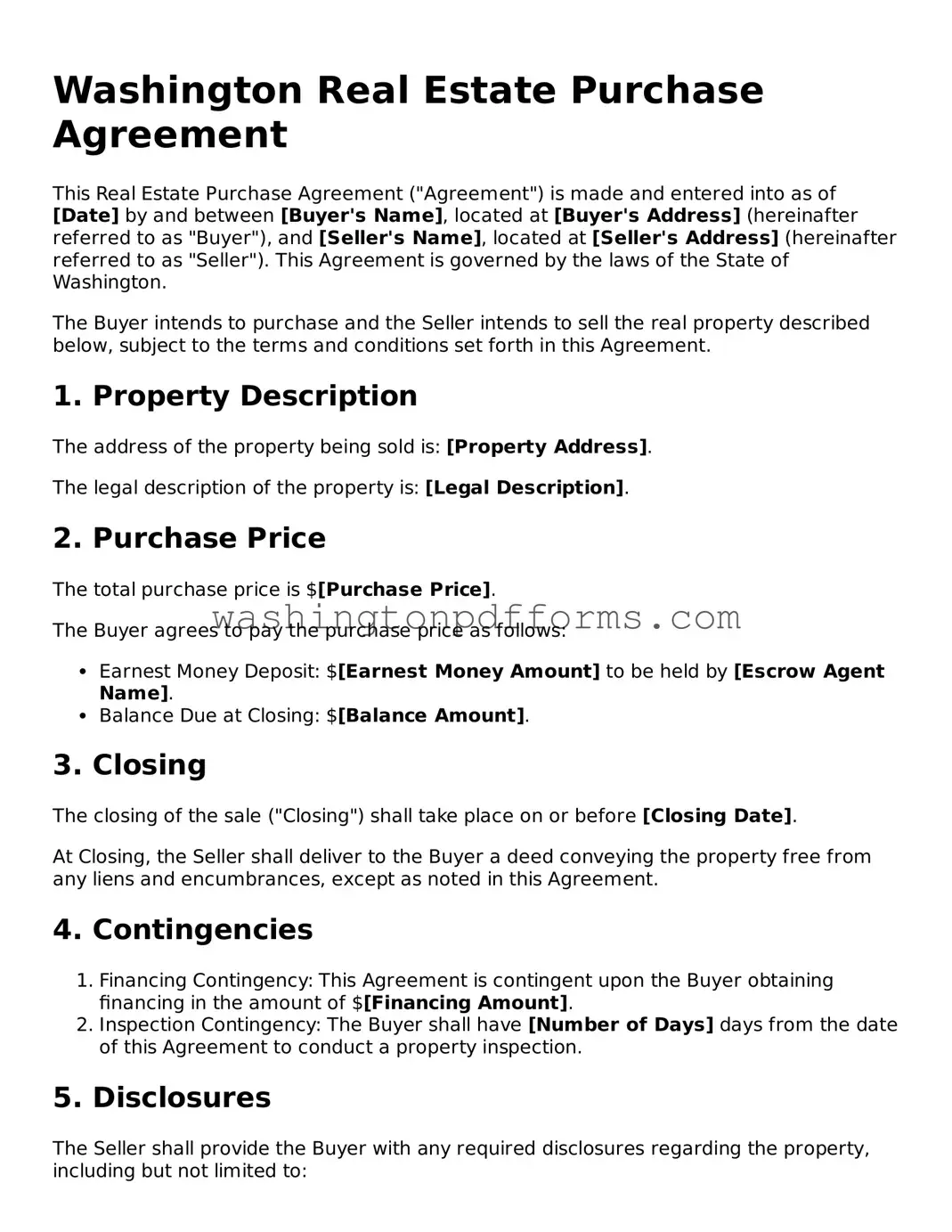Attorney-Approved Washington Real Estate Purchase Agreement Template
The Washington Real Estate Purchase Agreement form is a legal document used in real estate transactions to outline the terms and conditions of a property sale. This form serves as a binding contract between the buyer and seller, detailing essential elements such as purchase price, contingencies, and closing dates. Understanding this form is crucial for anyone involved in buying or selling real estate in Washington State.
Make My Real Estate Purchase Agreement Online
